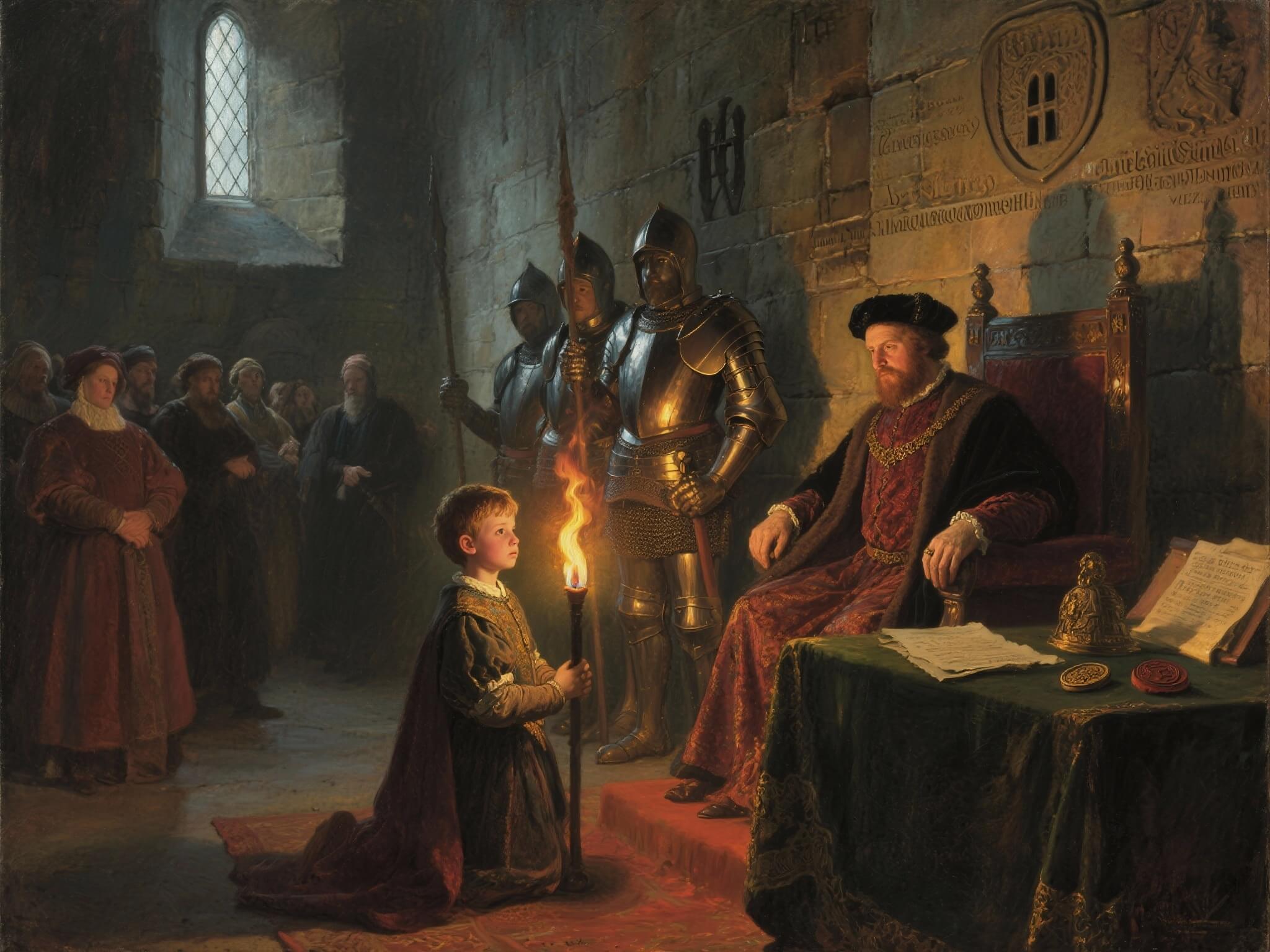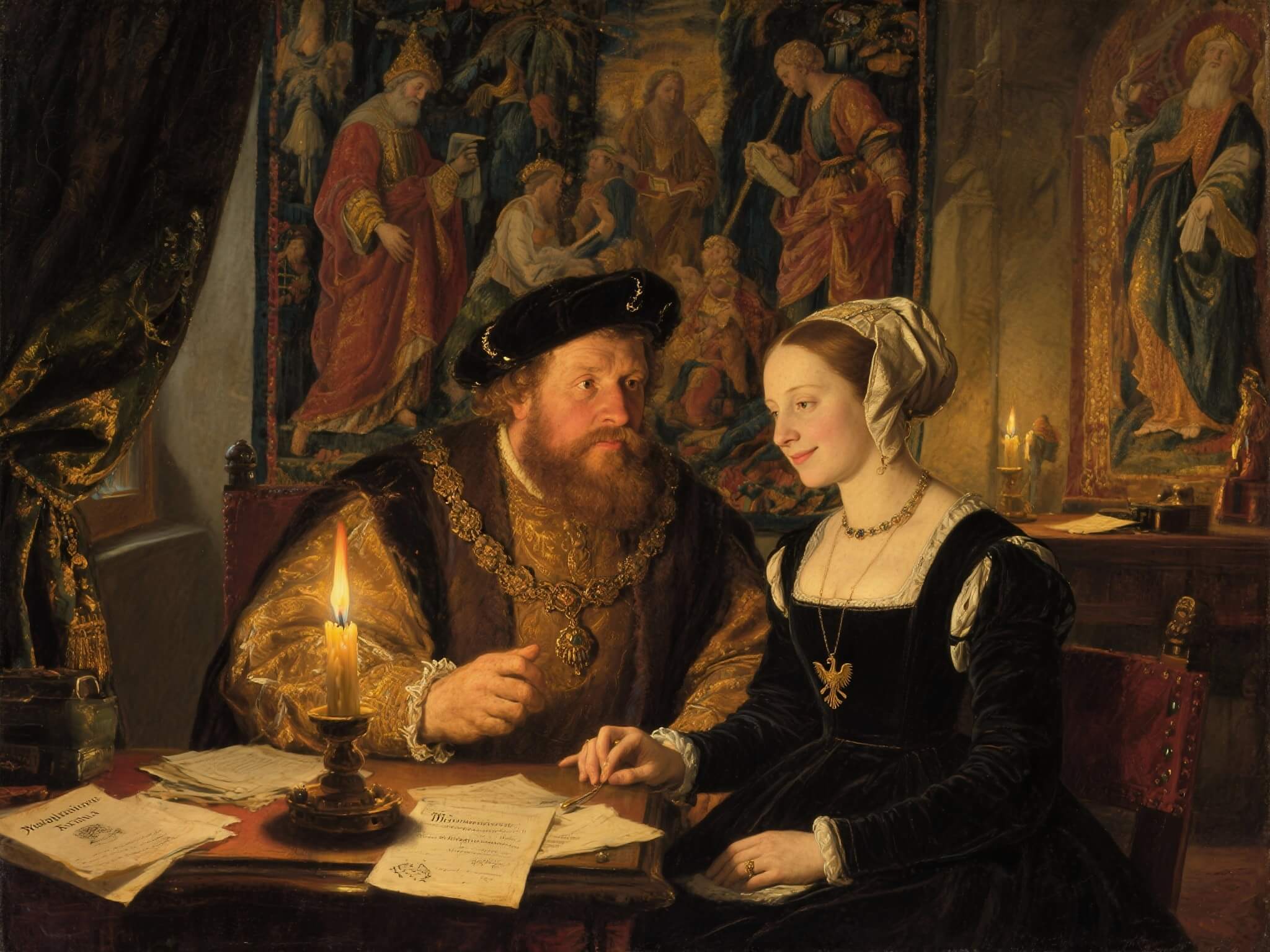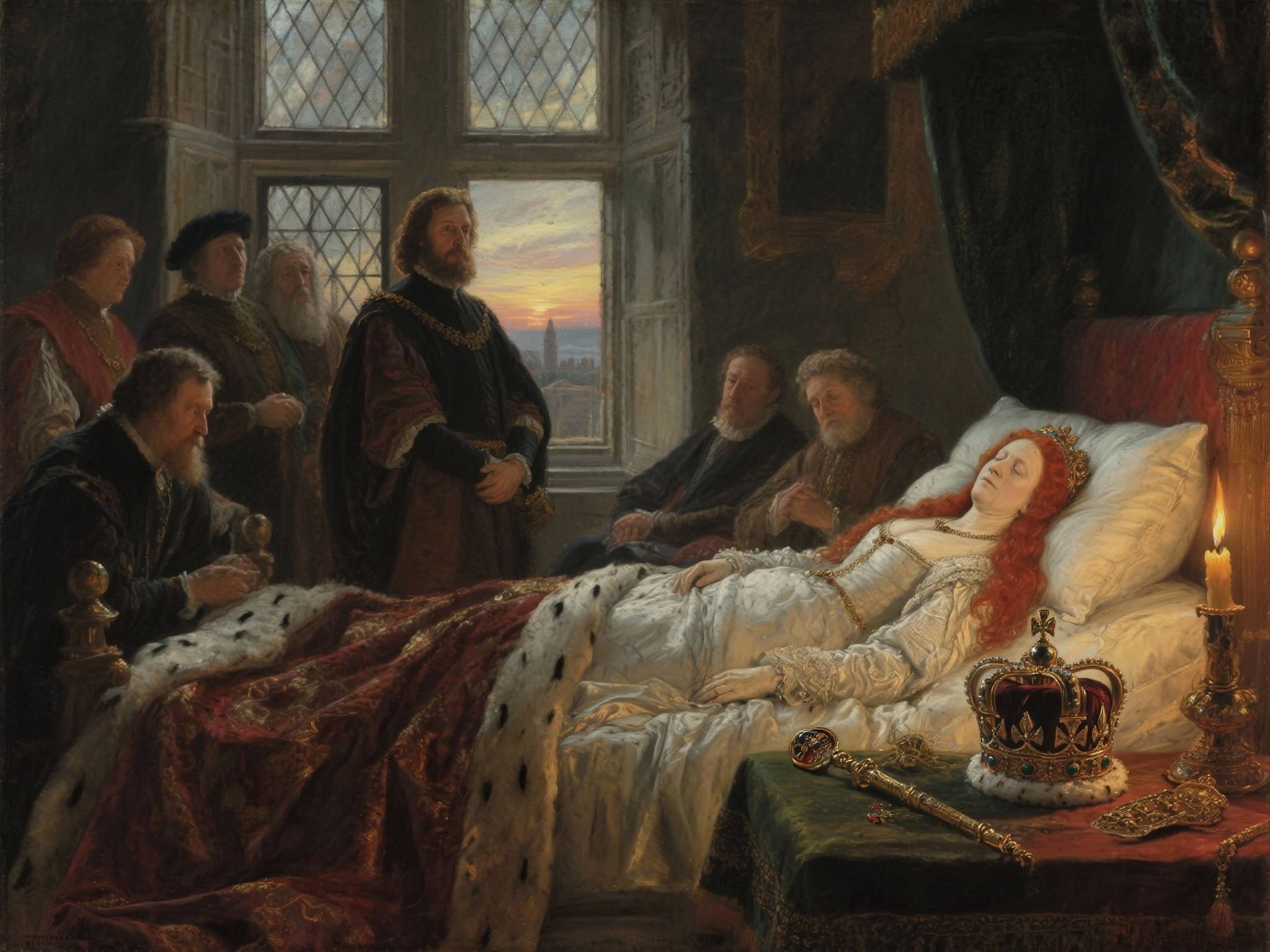When you think of English royalty, chances are the first images that come to mind are of Henry VIII and his six wives, or Elizabeth I standing defiantly against the Spanish Armada. These iconic figures belonged to the Tudor dynasty, a remarkable royal house that ruled England for 118 transformative years from 1485 to 1603.
The Tudor era represents one of history’s most dramatic transformations. In just over a century, five monarchs completely reshaped England from a war-torn medieval kingdom into a confident Renaissance power. This wasn’t just about changing rulers – it was about revolutionizing religion, society, culture, and England’s place in the world.
From Henry VII’s victory at the Battle of Bosworth Field to Elizabeth I’s death in 1603, the House of Tudor orchestrated changes that still influence modern Britain today. Their story involves palace intrigue, religious upheaval, devastating executions, and triumphant victories that read like the most captivating historical drama you’ve ever encountered.
How Did the Tudor Dynasty Rise to Power?
The Tudor story begins with a decisive battle that changed English history forever. On August 22, 1485, Henry Tudor faced King Richard III at the Battle of Bosworth Field in what would become the final confrontation of the Wars of the Roses.
The Battle of Bosworth Field and Henry VII’s Victory

Henry Tudor’s path to the throne wasn’t exactly straightforward. His claim came through his mother, Margaret Beaufort, whose lineage connected to Edward III through an originally illegitimate line. When Richard III allegedly murdered the Princes in the Tower, Henry became the leading Lancastrian claimant to the throne.
The battle itself was surprisingly brief. Richard III, despite his fearsome reputation, found himself abandoned by key supporters at the crucial moment. When Henry’s forces engaged, several of Richard’s allies either switched sides or simply refused to fight. Richard III died on the battlefield – the last English king to die in combat – and Henry Tudor claimed the throne as Henry VII.
This victory didn’t just end the Wars of the Roses; it began a new chapter in English history. Henry VII understood that winning the throne was only the beginning – keeping it would prove far more challenging.
Early Threats to Tudor Legitimacy
The early years of Tudor rule were anything but secure. Henry VII faced two major challenges to his legitimacy that tested his political skills and determination.

First came Lambert Simnel’s rebellion in 1487. Simnel, a baker’s son, was coached to impersonate Edward, Earl of Warwick (who was actually imprisoned in the Tower of London). Irish nobles, eager to challenge English rule, crowned Simnel as “Edward VI” in Dublin. Henry VII’s victory at the Battle of Stoke Field ended this threat, but it demonstrated how fragile Tudor authority remained.
Even more dangerous was Perkin Warbeck, who claimed to be Richard, Duke of York – one of the supposedly murdered Princes in the Tower. From 1493 to 1497, Warbeck gained support from foreign courts, including Scotland and Burgundy. His persistence and international backing made him a serious threat to Henry VII’s reign.
Henry VII’s response to these challenges revealed his political genius. Rather than simply executing rebels, he often showed mercy while strengthening his position through strategic marriages and careful diplomacy. His daughter Margaret’s marriage to James IV of Scotland in 1503 helped secure the northern border and eventually led to the union of English and Scottish crowns.
What Made Henry VIII’s Reign Revolutionary?
When Henry VIII ascended the throne in 1509, few could have predicted that this charismatic young king would fundamentally transform English religion, politics, and society. His 38-year reign became synonymous with revolutionary change, driven by both personal desires and political necessities.
The Six Wives of Henry VIII
Nothing captures the drama of Henry VIII’s reign quite like his matrimonial saga. His six wives weren’t just personal choices – each marriage reflected the political and religious upheavals of Tudor England.
Catherine of Aragon (married 1509) seemed like the perfect choice initially. This Spanish princess brought valuable diplomatic connections and appeared to offer stability after the uncertainties of Henry VII’s reign. However, their failure to produce a surviving male heir gradually poisoned their relationship over nearly 25 years of marriage.

Anne Boleyn changed everything. Henry’s infatuation with this enigmatic court lady led to the most dramatic decision of his reign – breaking with Rome to marry her. Their secret ceremony in November 1532, followed by an official ceremony in January 1533, defied papal authority and transformed English religion forever. Anne’s execution in 1536 on charges of adultery and treason remains one of history’s most controversial royal executions.
Jane Seymour finally gave Henry what he desperately wanted – a son. Edward VI’s birth in 1537 seemed to justify all of Henry’s previous actions, but Jane’s death just days later reminded everyone of the fragility of Tudor succession.
The remaining three wives – Anne of Cleves (the political marriage that lasted only months), Catherine Howard (executed for adultery in 1541), and Catherine Parr (who wisely survived) – reflected Henry’s increasing desperation and paranoia as he aged.
Why Did Henry VIII Break with Rome?
Henry’s break with Rome wasn’t initially about Protestant theology – it was about securing the Tudor succession. When Pope Clement VII refused to annul Henry’s marriage to Catherine of Aragon, the king faced a crucial choice: accept papal authority or assert English independence.
Henry chose independence, but he did so gradually. The Act of Supremacy in 1534 declared Henry “Supreme Head of the Church of England,” effectively creating a national church independent of Rome. This wasn’t just a religious revolution – it was a political one that enhanced royal power and allowed Henry to seize monastery wealth through the dissolution of monasteries.
The English Reformation under Henry VIII created a unique religious settlement. Unlike continental Protestant reformers, Henry maintained many Catholic practices while rejecting papal authority. This compromise position would influence English religious identity for centuries to come.
How Did the Mid-Tudor Crisis Shape England?
Henry VIII’s death in 1547 triggered what historians call the “mid-Tudor crisis” – a period of religious uncertainty, political instability, and succession challenges that tested whether the Tudor transformation could survive.
Edward VI and Protestant England
Edward VI, Henry’s long-awaited son, inherited the throne at just nine years old. His reign from 1547 to 1553 saw England move decisively toward Protestant theology under the guidance of his regents, particularly Edward Seymour and later John Dudley.
The boy king’s reign witnessed significant religious reforms that went far beyond his father’s break with Rome. The Book of Common Prayer introduced English-language worship, while Protestant theology replaced Catholic doctrine in English churches. These changes created a genuinely Protestant England for the first time.
However, Edward’s youth and short reign meant these reforms lacked deep roots. When he died at 15 in 1553, the religious question remained unresolved, setting the stage for his sister’s dramatic counter-reformation.
Mary I’s Catholic Restoration
Mary I’s reign (1553-1558) represented a complete reversal of English religious policy. Determined to restore Catholicism, Mary began what became known as the Marian Persecutions – a campaign of religious violence that earned her the nickname “Bloody Mary.”
Mary’s Catholic restoration involved more than just changing religious practices. She married Philip II of Spain, reconnected England with Rome, and executed approximately 280 Protestant reformers. These actions created a level of religious persecution unprecedented in English history.
The psychological impact of Mary’s reign cannot be overstated. Her religious persecution and Spanish marriage convinced many English people that Catholicism meant foreign domination and domestic tyranny. This association would influence English Protestant identity long after Mary’s death in 1558.
Why Is Elizabeth I’s Reign Called the Golden Age?
When Elizabeth I became queen in 1558, she inherited a religiously divided, economically struggling kingdom surrounded by hostile Catholic powers. By her death 45 years later, England had become a confident Renaissance power with global ambitions. This transformation earned her reign the title of England’s Golden Age.
The Defeat of the Spanish Armada
The Spanish Armada defeat in 1588 represents the defining moment of Elizabeth’s reign and arguably of English history. Philip II of Spain assembled 130 ships to invade England and restore Catholic rule, but English naval innovations and strategic brilliance turned potential disaster into triumphant victory.
Elizabeth’s investment in naval strength proved crucial. English ships featured superior design innovations that allowed faster sailing and heavier guns. When the Armada approached, English tactics of long-range artillery attacks avoided the Spanish advantage in close combat. Weather completed what English guns began – storms scattered the Spanish fleet, and less than half the ships returned to Spain.
This victory had consequences far beyond military success. It established England as a major naval power, secured Protestant independence, and created a national mythology that influenced English identity for centuries.
Economic Transformation Under Elizabeth
Elizabeth inherited a virtually bankrupt state but transformed England into a prosperous nation through careful financial management and expanding trade. By 1574, she had cleared the regime’s debt, and by 1584 the Crown enjoyed a surplus of £300,000.
The Elizabethan economy benefited from expanding trans-Atlantic trade and the establishment of trading companies that would eventually create the British Empire. The Royal Exchange, built by merchant Thomas Gresham, symbolized England’s growing commercial confidence and international connections.
How Did Tudor England Transform from Medieval to Renaissance Society?
The Tudor transformation involved more than political and religious change – it revolutionized English society, culture, and daily life. By 1603, England bore little resemblance to the medieval kingdom Henry VII had inherited in 1485.
Tudor Social Structure and Class Mobility
Tudor social structure evolved from rigid feudal hierarchies to a more complex four-tier system: Nobility, Gentry, Yeomanry, and Poor. Unlike medieval society, Tudor England offered genuine opportunities for social advancement through royal service, commerce, or education.
Henry VII actively encouraged “New Men” from humble origins, while Henry VIII’s need for administrative support created opportunities for talented individuals regardless of birth. This class mobility produced figures like Thomas Wolsey (a butcher’s son who became Lord Chancellor) and Thomas Cromwell (a blacksmith’s son who orchestrated the English Reformation).
Renaissance Architecture and Royal Palaces
Tudor architecture represented a dramatic departure from medieval building styles. Hampton Court Palace exemplifies this transformation through intricate brickwork, innovative chimney treatments, and the integration of Italian Renaissance decorative elements.
Henry VIII’s additions to Hampton Court included terracotta roundels of Roman emperors – decorative touches completely new to England. The Great Hall features a spectacular hammerbeam roof decorated with carved heads, royal badges, and Tudor pendants that demonstrated the monarchy’s cultural sophistication and artistic patronage.
How Did the Tudor Dynasty End and What Was Its Legacy?
The Tudor dynasty ended with Elizabeth I’s death in 1603, but the succession crisis that followed revealed both the dynasty’s achievements and its fundamental limitation – the lack of direct heirs.

The Succession Crisis and James I
Elizabeth faced a crucial succession dilemma between multiple claimants, but ultimately chose James VI of Scotland, who became James I of Great Britain. This decision united the English and Scottish crowns and established the House of Stuart, fulfilling Henry VII’s strategic vision of Anglo-Scottish unity through his daughter Margaret’s marriage.
The Tudor Legacy in Modern England
The Tudor legacy permeates modern British identity in ways both obvious and subtle. The Church of England remains the established church, Parliament’s enhanced role dates to Tudor innovations, and English cultural confidence traces back to Elizabethan achievements.
More fundamentally, the Tudors created the template for English exceptionalism – the belief that England’s unique history, institutions, and culture set it apart from continental Europe. This Tudor-era confidence would drive English expansion, exploration, and eventually the creation of the British Empire.
The Tudor story reminds us that historical transformation often results from the intersection of personal ambition, political necessity, and cultural change. In just 118 years, five remarkable monarchs transformed England from a medieval kingdom into a Renaissance power whose influence would eventually span the globe.
